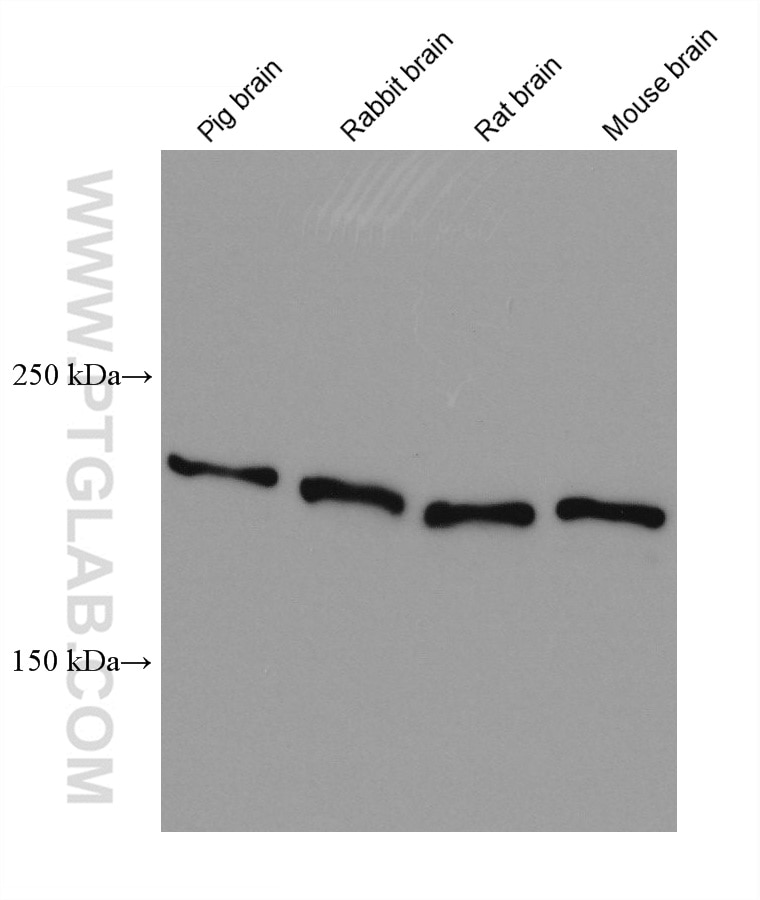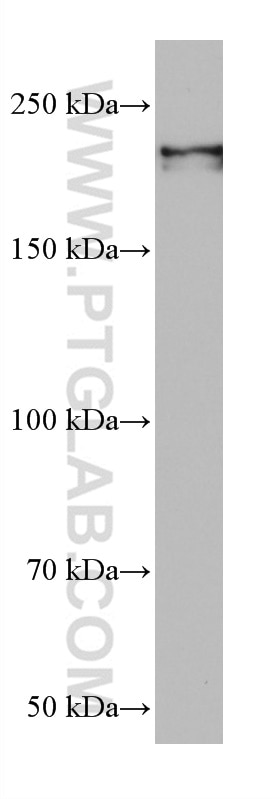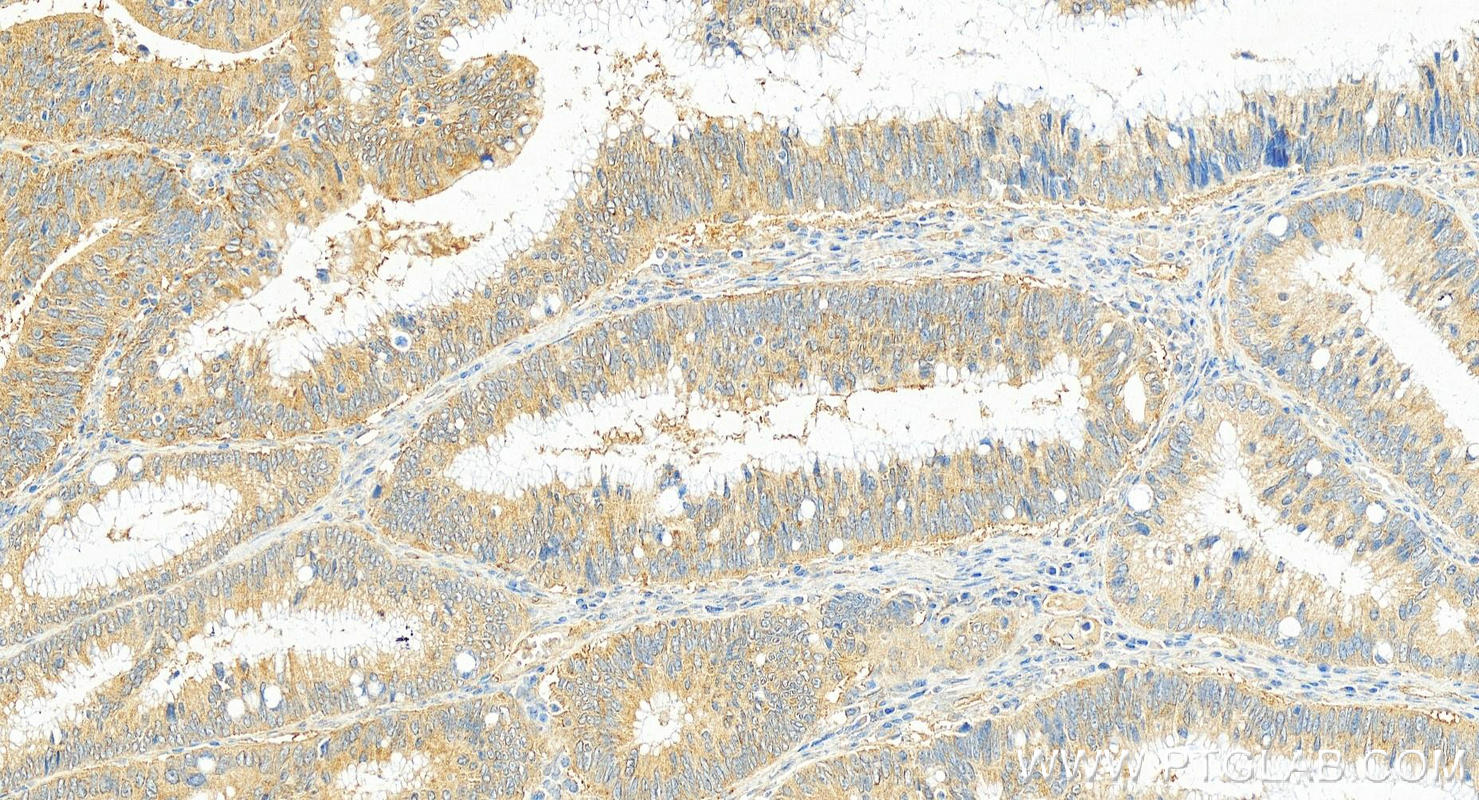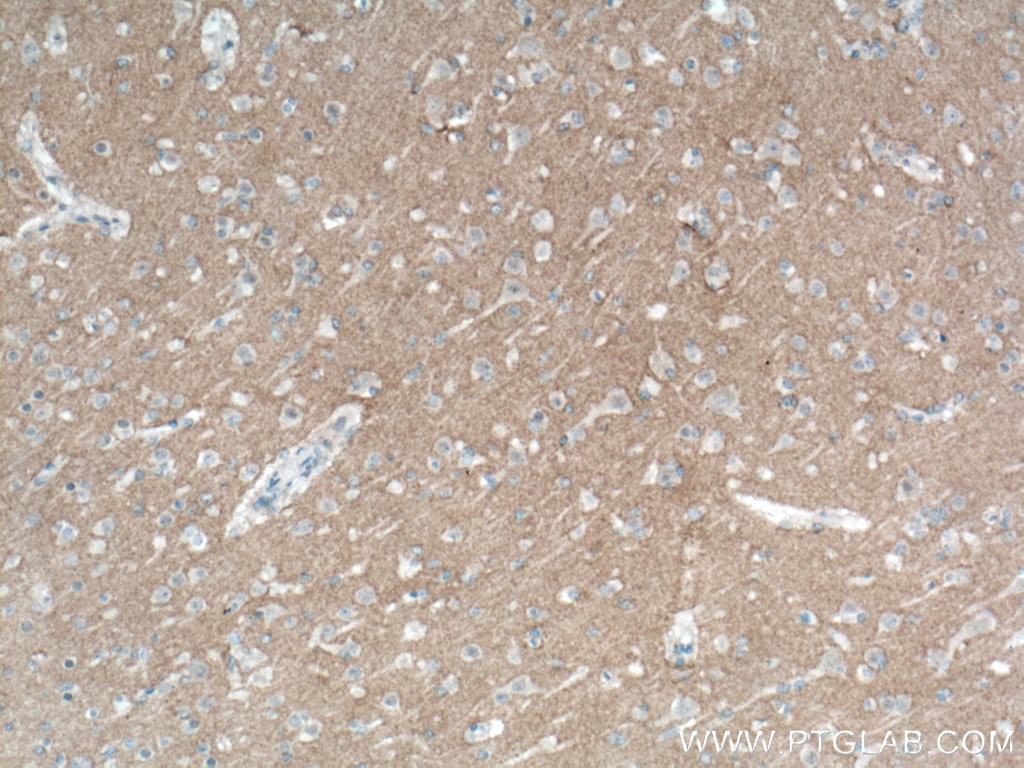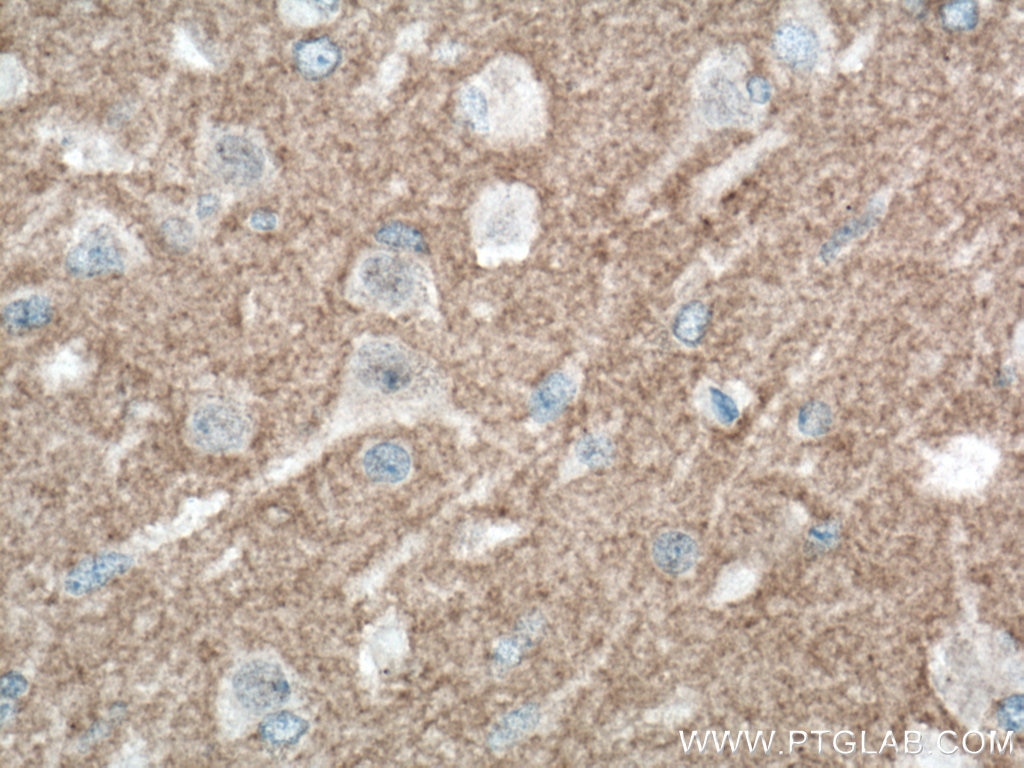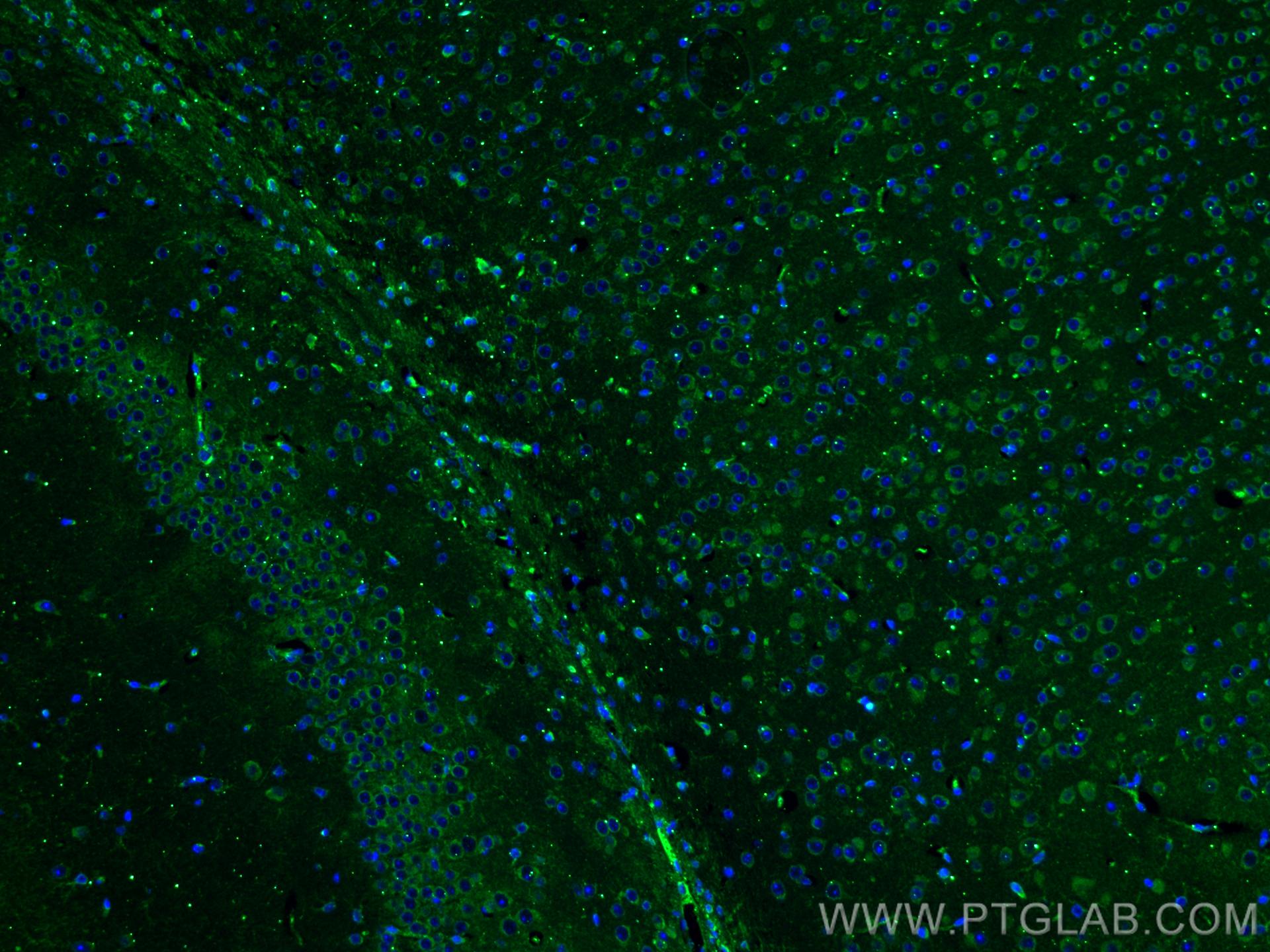Anticorps Monoclonal anti-L1CAM/CD171
L1CAM/CD171 Monoclonal Antibody for WB, IHC, IF-P, ELISA
Hôte / Isotype
Mouse / IgG1
Réactivité testée
Humain, Lapin, porc, rat, souris
Applications
WB, IHC, IF-P, ELISA
Conjugaison
Non conjugué
CloneNo.
3H7B9
N° de cat : 67115-1-Ig
Synonymes
Galerie de données de validation
Applications testées
| Résultats positifs en WB | tissu cérébral de porc, tissu cérébral de lapin, tissu cérébral de rat, tissu cérébral de souris, tissu de cervelet de porc |
| Résultats positifs en IHC | tissu de cancer du côlon humain, tissu cérébral de souris, tissu cérébral humain, tissu de côlon humain il est suggéré de démasquer l'antigène avec un tampon de TE buffer pH 9.0; (*) À défaut, 'le démasquage de l'antigène peut être 'effectué avec un tampon citrate pH 6,0. |
| Résultats positifs en IF-P | tissu cérébral de souris, |
Dilution recommandée
| Application | Dilution |
|---|---|
| Western Blot (WB) | WB : 1:5000-1:50000 |
| Immunohistochimie (IHC) | IHC : 1:500-1:2000 |
| Immunofluorescence (IF)-P | IF-P : 1:200-1:800 |
| It is recommended that this reagent should be titrated in each testing system to obtain optimal results. | |
| Sample-dependent, check data in validation data gallery | |
Applications publiées
| WB | See 3 publications below |
| IF | See 1 publications below |
Informations sur le produit
67115-1-Ig cible L1CAM/CD171 dans les applications de WB, IHC, IF-P, ELISA et montre une réactivité avec des échantillons Humain, Lapin, porc, rat, souris
| Réactivité | Humain, Lapin, porc, rat, souris |
| Réactivité citée | Humain, souris |
| Hôte / Isotype | Mouse / IgG1 |
| Clonalité | Monoclonal |
| Type | Anticorps |
| Immunogène | L1CAM/CD171 Protéine recombinante Ag17706 |
| Nom complet | L1 cell adhesion molecule |
| Masse moléculaire calculée | 1257 aa, 140 kDa |
| Poids moléculaire observé | 220 kDa |
| Numéro d’acquisition GenBank | BC126229 |
| Symbole du gène | L1CAM |
| Identification du gène (NCBI) | 3897 |
| Conjugaison | Non conjugué |
| Forme | Liquide |
| Méthode de purification | Purification par protéine G |
| Tampon de stockage | PBS with 0.02% sodium azide and 50% glycerol |
| Conditions de stockage | Stocker à -20°C. Stable pendant un an après l'expédition. L'aliquotage n'est pas nécessaire pour le stockage à -20oC Les 20ul contiennent 0,1% de BSA. |
Informations générales
L1CAM, also known as NCAM-L1 or CD171, is a cell adhesion molecule of the immunoglobulin superfamily. It is a 200-220 kDa transmembrane glycoprotein composed of six Ig-like domains and five fibronectin type III repeats followed by a transmembrane region and a highly conserved cytoplasmic tail (PMID: 3412448; 22796939). L1CAM is primarily expressed in the nervous system and is involved in neuron-neuron adhesion, neurite fasciculation, outgrowth of neurites, cerebellar granule cell migration, neurite outgrowth on Schwann cells and interactions among epithelial cells of intestinal crypts (PMID: 3412448; 10767310). L1CAM is overexpressed in many human cancers and is often associated with bad prognosis (PMID: 27267927; 26111503).
Protocole
| Product Specific Protocols | |
|---|---|
| WB protocol for L1CAM/CD171 antibody 67115-1-Ig | Download protocol |
| IHC protocol for L1CAM/CD171 antibody 67115-1-Ig | Download protocol |
| IF protocol for L1CAM/CD171 antibody 67115-1-Ig | Download protocol |
| Standard Protocols | |
|---|---|
| Click here to view our Standard Protocols |
Publications
| Species | Application | Title |
|---|---|---|
J Neuroimmune Pharmacol Brain-Derived Exosomal CircRNAs in Plasma Serve as Diagnostic Biomarkers for Acute Ischemic Stroke | ||
Cell Commun Signal Extracellular vesicles from UTX-knockout endothelial cells boost neural stem cell differentiation in spinal cord injury | ||
J Extracell Vesicles Isolation and quantification of L1CAM-positive extracellular vesicles on a chip as a potential biomarker for Parkinson's Disease |
